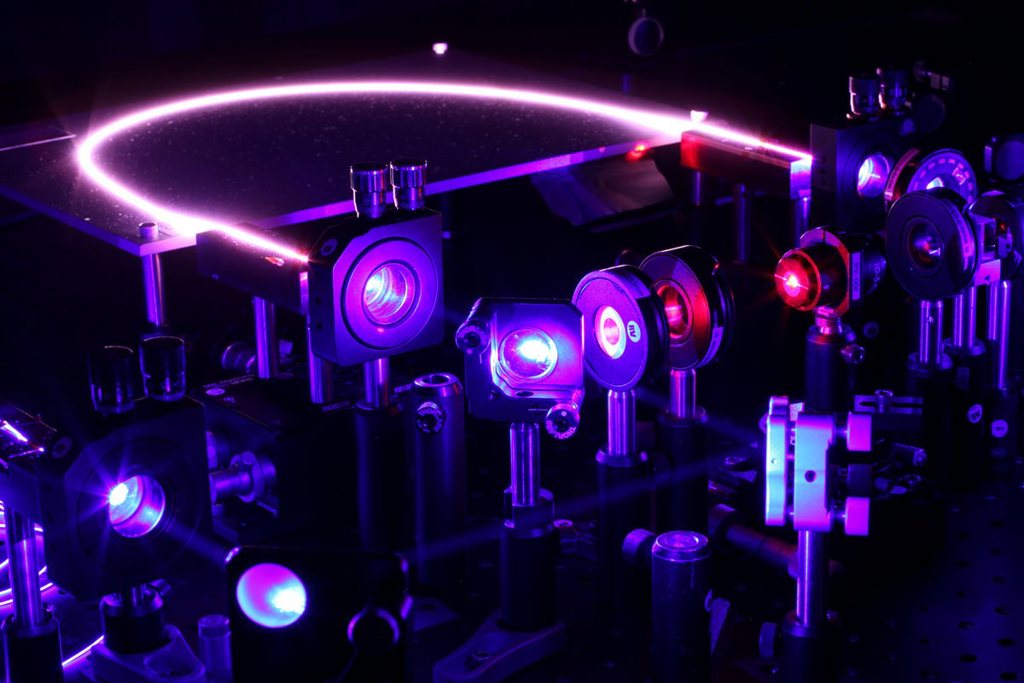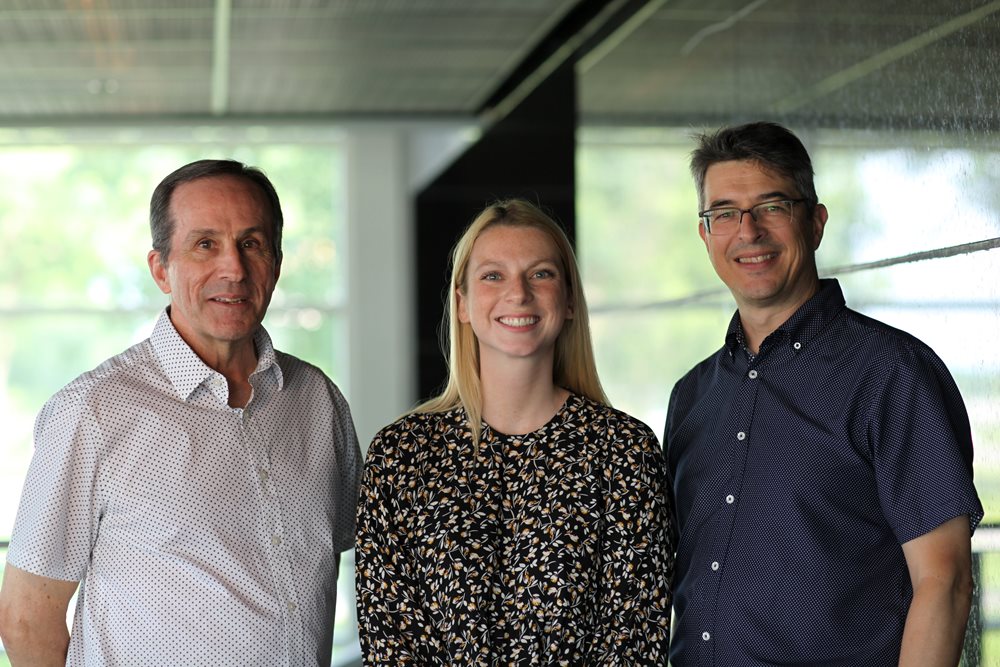About
06 July 2023
Researchers demonstrate first visible wavelength femtosecond fiber laser
Technology advance lays groundwork for reliable, compact ultrafast lasers for biomedical applications and more

Caption: Researchers have developed the first fiber laser that can produce femtosecond pulses in the visible range of the electromagnetic spectrum.
Credit: Jérôme Lapointe
WASHINGTON — Researchers have developed the first fiber laser that can produce femtosecond pulses in the visible range of the electromagnetic spectrum. Fiber lasers producing ultrashort, bright visible-wavelength pulses could be useful for a variety of biomedical applications as well as other areas such as material processing.
Visible femtosecond pulses are usually obtained using complex and inherently inefficient setups. Although fiber lasers represent a very promising alternative due to their ruggedness/reliability, small footprint, efficiency, lower cost and high brightness, it hasn’t been possible, until now, to produce visible pulses with durations in the femtosecond (10-15 s) range directly with such lasers.
“Our demonstration of a femtosecond fiber laser operating in the visible spectrum paves the way for a new class of reliable, efficient and compact ultrafast lasers,” said research team leader Réal Vallée from Université Laval in Canada.
In the Optica Publishing Group journal Optics Letters, the researchers describe their new laser, which is based on a lanthanide-doped fluoride fiber. Emitting red light at 635 nm, the laser achieves compressed pulses with a duration of 168 fs, a peak power of 0.73 kW and a repetition rate of 137 MHz. Using a commercial blue laser diode as the optical source of energy, or pump source, helped make the overall design rugged, compact and cost-efficient.
“Provided higher energies and powers can be achieved in the near future, many applications could benefit from this type of laser,” said Marie-Pier Lord a doctoral student involved in the project. “Potential applications include high-precision, high-quality ablation of biological tissues and two-photon excitation microscopy. Femtosecond laser pulses also allow cold ablation during material processing, a process that can make much cleaner cuts [than longer pulses] because it doesn’t produce thermal effects.”

Caption: The research team included Réal Vallée, Marie-Pier Lord and Michel Olivier as well as Martin Bernier who is not pictured.
Credit: Jérôme Lapointe
Getting visible light from fiber lasers
In a fiber laser, an optical fiber doped with rare-earth elements acts as the lasing medium. Although fiber lasers are among the most simple, rugged and reliable high-brightness laser systems, the use of silica fibers tends to limit them to near-infrared spectral region. Vallée’s group has been working to extend the spectral range of these laser sources by using fibers made from fluoride instead of silica.
“We previously focused on developing mid-infrared fiber lasers, but recently gained interest in visible fiber lasers,” said Lord. “Although the lack of compact and efficient pump sources for such lasers hindered their development for a long time, the recent advent of semiconductor-based laser sources operating in the blue spectrum has provided a key technology for the development of efficient visible fiber lasers.”
After demonstrating fiber lasers that emit visible wavelengths continuously, the researchers wanted to extend the advance to ultrafast pulsed sources. Thanks to the refinement in the fabrication process of fluoride fibers, it is now possible to obtain lanthanide-doped fibers with properties that are essential for the development of efficient visible fiber lasers.
Integrating technologies into a new laser
The new pulsed fiber laser developed by Vallée’s team combines a lanthanide-doped fluoride fiber with a commercially available blue diode pump laser. To create and maintain a pulsed output, the researchers also had to figure out how to carefully manage the light polarization in the fiber.
“The development of a laser at a new wavelength, where the material properties of the optical components are different than those used previously, can sometimes be tricky,” said co-author Michel Olivier. “However, our experiments showed that the performance of our laser was in excellent agreement with our simulations. This confirmed that the system was well-behaved and understood, and that the important parameters of the system were characterized properly and well-adapted for pulsed lasers, especially the properties of the optical fiber that we used.”
Next, the researchers would like to improve the technology by making the setup completely monolithic, meaning that the individual fiber-pigtailed optical components would all be directly bonded to each other. This would reduce the setup’s optical losses, improve efficiency and make the laser more reliable, compact and robust. They are also investigating different avenues to improve the laser’s pulse energy, pulse duration and average power.
Paper: M.-P. Lord, M. Olivier, M. Bernier, R. Vallée, “Visible femtosecond fiber laser,” Opt. Lett., 48, 14 (2023).
DOI: https://doi.org/10.1364/OL.492671.
About Optica Publishing Group
Optica Publishing Group is a division of the society, Optica, Advancing Optics and Photonics Worldwide. It publishes the largest collection of peer-reviewed and most-cited content in optics and photonics, including 18 prestigious journals, the society’s flagship member magazine, and papers and videos from more than 835 conferences. With over 400,000 journal articles, conference papers and videos to search, discover and access, our publications portfolio represents the full range of research in the field from around the globe.
About Optics Letters
Optics Letters has been publishing high-impact research in the field of photonics for over 45 years and offers rapid dissemination of new results in all areas of optical science with short, original, peer-reviewed communications. Optics Letters accepts papers that are noteworthy to a substantial part of the optics community. Published by Optica Publishing Group and led by Editor-in-Chief Miguel Alonso, Institut Fresnel, École Centrale de Marseille and Aix-Marseille Université, France, University of Rochester, USA. For more information, visit Optics Letters.
Media Contact
